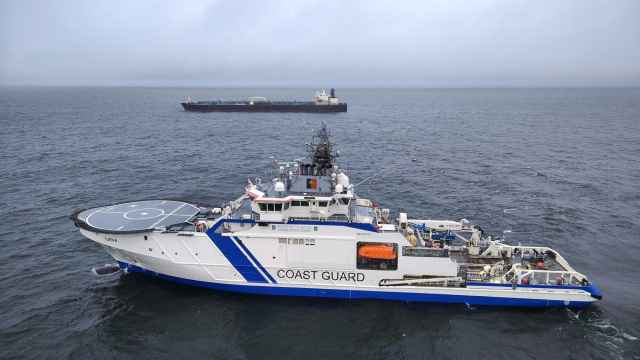
Helge Masannek
Director
Taxes & Legal
Three years ago, Russia adopted new transfer pricing legislation. The new rules became effective on Jan. 1, 2012. They are in line with international standards (OECD Guidelines on Transfer Pricing), but their concept was, and still is, quite new for the Russian tax authorities. Thus the rules provide for a transition period until 2017: For the years 2012 and 2013, certain thresholds were in place so that not all companies having transactions with affiliated entities abroad needed to prepare a transfer pricing notification and would be audited by the tax authorities. Also, in case of violations during these years, no penalties were provided for. Since 2014, all companies with transactions with affiliated entities abroad need to submit a transfer pricing notification by May 20, 2015 and might be audited by the tax authorities. But the penalties for 2014 until 2016 are still on a reduced level of 20 percent of the outstanding tax liabilities in case of violations of the arms´ lengths principle. Only from 2017, a penalty of 40 percent of the outstanding tax liabilities can be imposed in case of such violations. When it comes to tax audits of transfer pricing, the tax authorities are still gaining experience. The department for transfer pricing of the Federal Tax Service of Russia is planning to audit 300 companies in 2014 for their compliance with the transfer pricing rules in 2012. The results are still outstanding.
What does this mean for taxpayers?
First of all, companies having "controlled transactions" in 2014, for example transactions on the purchase of goods from the parent company or a sister company abroad, having service, license or loan agreements with affiliated companies shall notify the tax authority until May 20, 2015 on such transactions. The notification is a fairly comprehensive set of documents including details of such transactions. Submitting a notification in paper form is usually not feasible because it consists, in most cases, of several thousand pages. So usually the notification is submitted electronically, for example by using the respective function in the 1C accounting program. If the accounting is done in other programs, the company should check if a module is available to submit the notification electronically. If a module is not available or too expensive to install, an option might be to export the data from SAP, MS Dynamics or other programs to an Excel spreadsheet and import this data from the spreadsheet into 1C. In 1C, some details like the customs codes and the tax ID number of the affiliated companies shall be added before the notification can be generated and submitted to the tax authorities.
When preparing the transfer pricing documentation on controlled transactions, several questions and problems appear. As most foreign companies doing business in Russia already have transfer pricing documentation in place, one of the questions that arise is whether it is sufficient to simply take such documentation and maybe translate it into Russian or whether the European master file documentation combined with a small additional country file for Russia might be sufficient. Unfortunately, in most cases existing transfer pricing documentation cannot be used in Russia straight away. Russia is also not applying the master file concept. Thus the preparation of a new documentation package according to Russian transfer pricing regulations is necessary. But usually the information mentioned in the existing documentation on the functions of the parties involved in a transaction, the risk taken, the corporate structure, etc. are also needed for the preparation of the documentation in Russia. In this way, the existing documentation makes it easier to prepare the documentation needed for Russia. It should be taken into account that taxpayers have only 30 days for providing the documentation to the tax authorities after receiving a respective request. Such short period might often not be sufficient to prepare a proper documentation; hence, it should be prepared well in advance.
With regard to the transfer pricing methods, further problems appear. For example, the application of the "resale price" method or the "cost-plus" method requires information about the profitability of comparable companies which is usually not available. So in most cases, the "transactional net margin" method is applied to prove that the controlled transactions are performed at an arm´s length. But also, the application of this method might cause problems as the Tax Code provides for certain requirements for comparable companies. For example, such companies shall not have negative net assets on Dec. 31, of the current year and not show losses for more than one year of the past three years. Thus, the profit margin is usually positive, which might lead to an adjustment of prices in intercompany transactions. The question of how to deal with the fact that most companies entering the Russian market have losses during the market entry phase is not yet clear, unfortunately. The transfer pricing rules do not make a distinction between the market entry phase and usual business, and in fact require a positive profit margin right from the start of their business on the Russian market. So there are still some questions to be answered by the tax authorities.
A Message from The Moscow Times:
Dear readers,
We are facing unprecedented challenges. Russia's Prosecutor General's Office has designated The Moscow Times as an "undesirable" organization, criminalizing our work and putting our staff at risk of prosecution. This follows our earlier unjust labeling as a "foreign agent."
These actions are direct attempts to silence independent journalism in Russia. The authorities claim our work "discredits the decisions of the Russian leadership." We see things differently: we strive to provide accurate, unbiased reporting on Russia.
We, the journalists of The Moscow Times, refuse to be silenced. But to continue our work, we need your help.
Your support, no matter how small, makes a world of difference. If you can, please support us monthly starting from just $2. It's quick to set up, and every contribution makes a significant impact.
By supporting The Moscow Times, you're defending open, independent journalism in the face of repression. Thank you for standing with us.
Remind me later.





